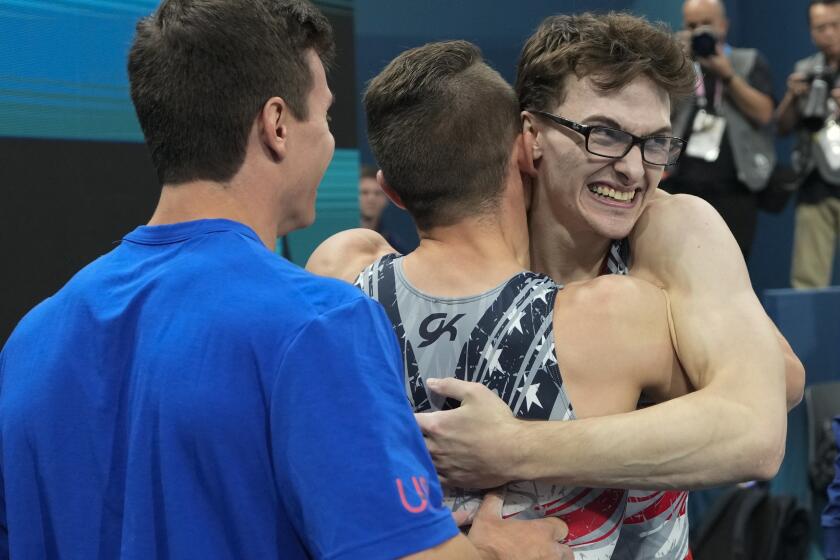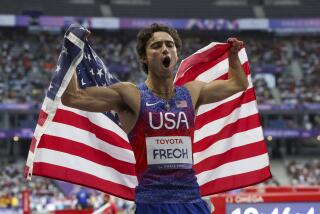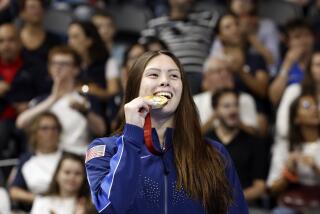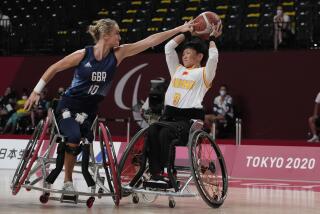
- Share via
PARIS — In what has become a daily ritual, crowds jostle along the Champs-Élysées, bypassing cafes and expensive shops, moving eastward in numbers so great that they spill off the sidewalks and into the street.
They are headed for fencing at the Grand Palais or skateboarding at the Place de la Concorde. An Uber driver grumbles as he navigates through the chaos.
“Too many people,” he says.
Scenes like this have played out across the city in the early days of the 2024 Summer Olympics, with throngs of fans descending on stadiums and arenas. Once inside, they have cheered and chanted and sung “La Marseillaise” for French athletes.
All of which is good news for the Games.
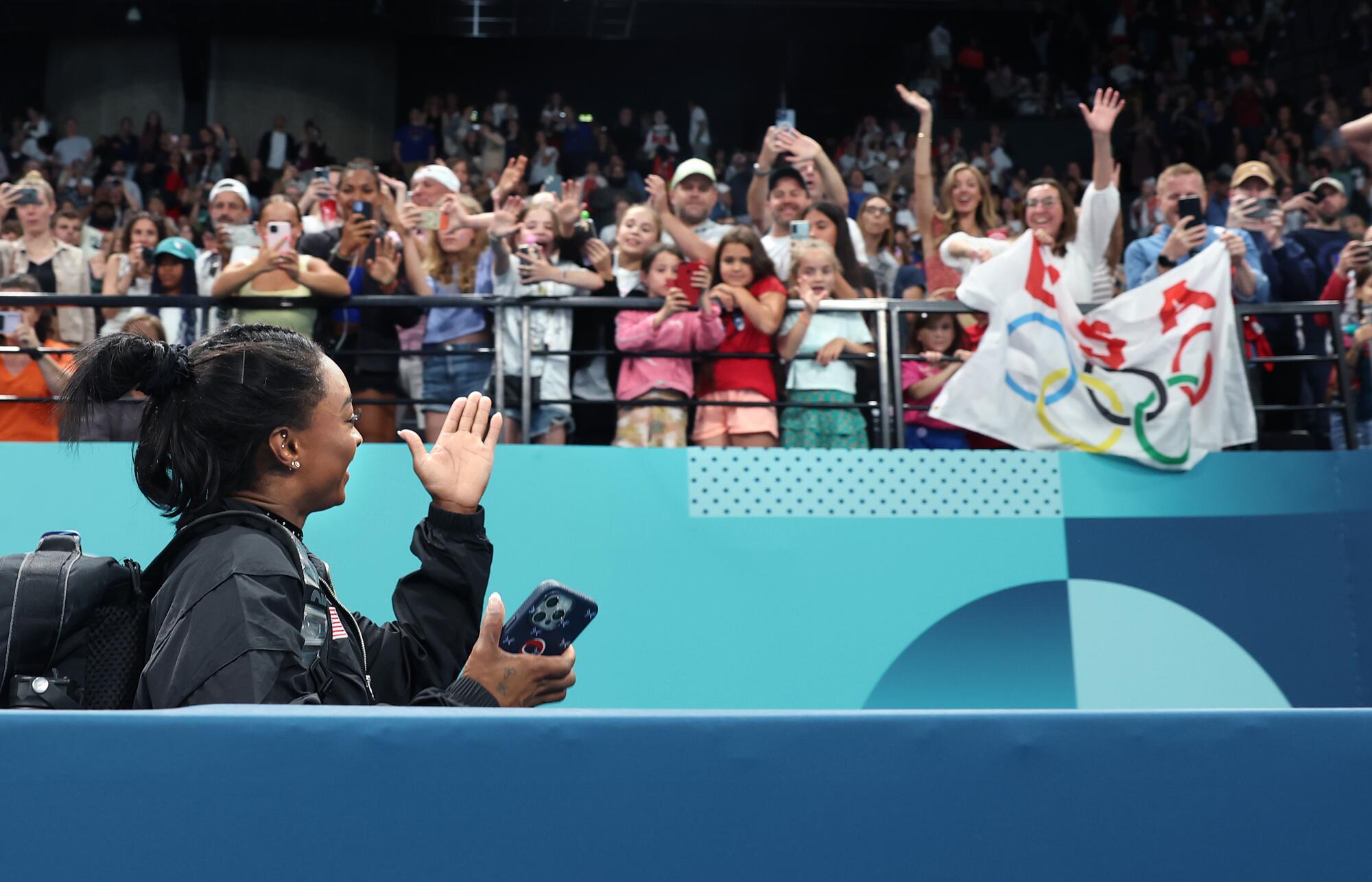
A global pandemic muffled the last two editions of this international competition in Tokyo and Beijing. Spectators were largely prohibited, leaving athletes to compete in ghostly silence. There wasn’t much congregating in public spaces.
Now, Paris is showing signs of a rebound. Though final tourism numbers and ticket sales are still to be determined, sports such as rugby and basketball already have drawn record attendance.
It seems the Olympics are getting their buzz back.
“We all really thrive off the crowd and the energy,” said American gymnast Suni Lee, who won all-around gold in an empty Tokyo arena. “It’s just going to be a lot more fun this time.”

Not everyone loves these first post-COVID lockdown Olympics.
Shop owners and hoteliers have complained of slower-than-expected business in some areas, and the Paris tourism authority recently trimmed its visitor forecast from 15 million to 11 million. Though organizers reported selling a record 9.7 million tickets, hundreds of thousands remained available.
To put the current situation in context, it helps to look back.
In 2021, the postponed Tokyo Olympics and its empty venues had a sterile feeling, lacking in surprises and spontaneity, almost like sports conducted in a laboratory. From the stands, reporters could hear coaches shouting advice.
The internet swooned when Stephen Nedoroscik, who wears glasses and solves Rubik’s Cubes, nailed his pommel horse routine to seal a U.S. Olympic medal.
Thirty-two athletes tested positive for COVID and at least 18 — including a German cyclist, a Dutch skateboarder and a hurdler from Trinidad and Tobago — were pulled from competition. Greece had to withdraw its entire artistic swimming team.
“It was such a hard barrier to get over,” said Jagger Eaton, a bronze medalist for the U.S. in skateboarding. “It was really tough.”
The 2022 Winter Games in Beijing were supposed to herald a return to normal as vaccinations increased and COVID case numbers declined worldwide. Then came the Omicron variant, prompting Chinese officials to enact harsh restrictions.
Everyone connected to the Olympics endured daily throat swabs, mask wearing and frequent temperature checks. With these protocols, the testing numbers improved but attendance at events was limited to a select group of invitees.
“It took away from the setting and drama to be honest,” said NBC host Mike Tirico, who left China early for the Super Bowl and covered the rest of the Games remotely. “It had no texture. It had no feel, no warmth.”

Already faced with an aging fan base, struggling to attract a younger demographic, the International Olympic Committee needed some good news in France.
“Frankly, I think it was a miracle the Games could take place during COVID,” said Michael Payne, a sports consultant and former IOC executive. “But there’s no question they had a difficult few years.”
Paris scored its first victory when hundreds of thousands braved a drenching summer storm to watch the opening ceremony on the Seine. The next morning, the line for an official merchandise store near the Petit Palais stretched down the block.
1
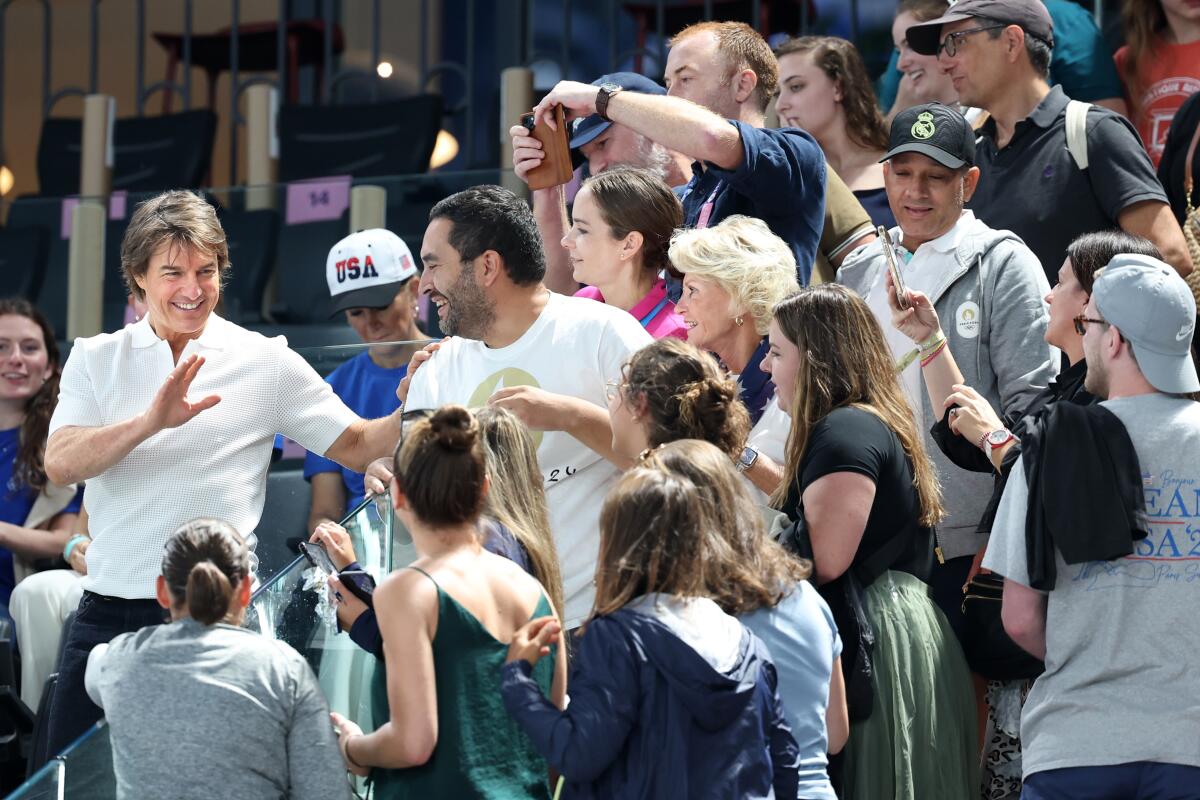
2
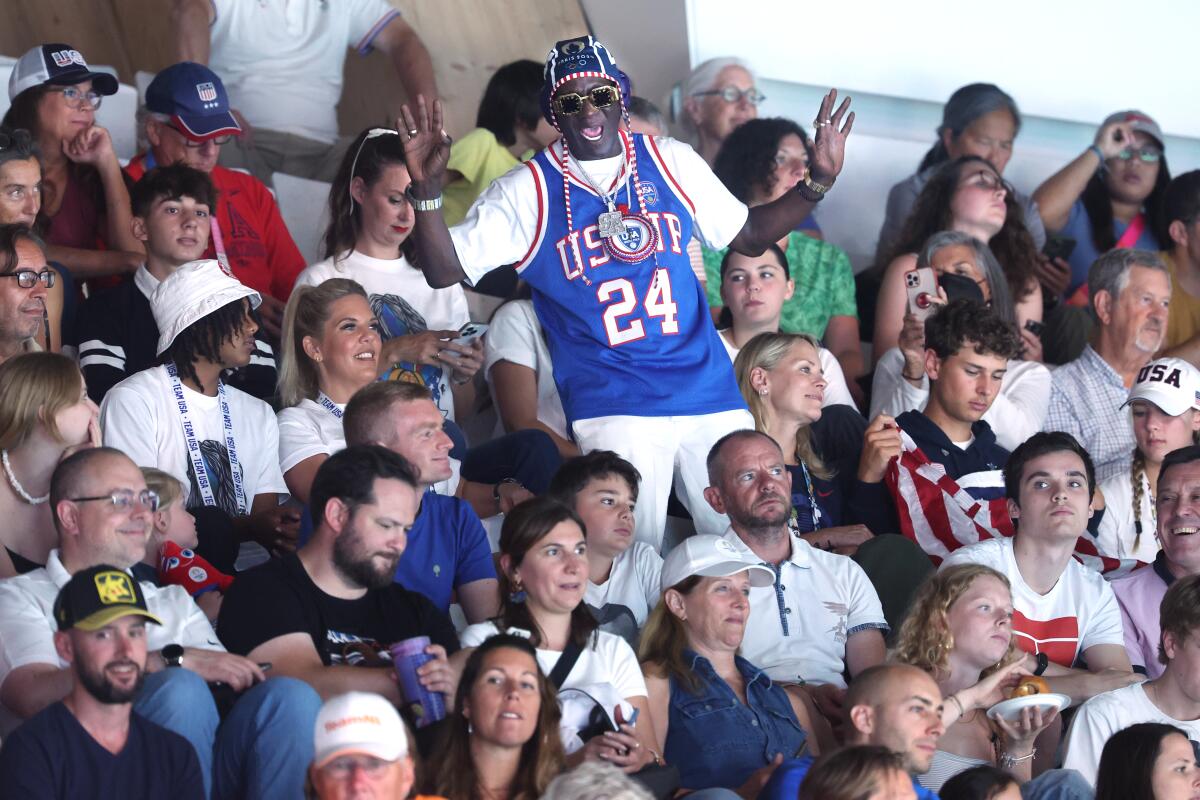
3
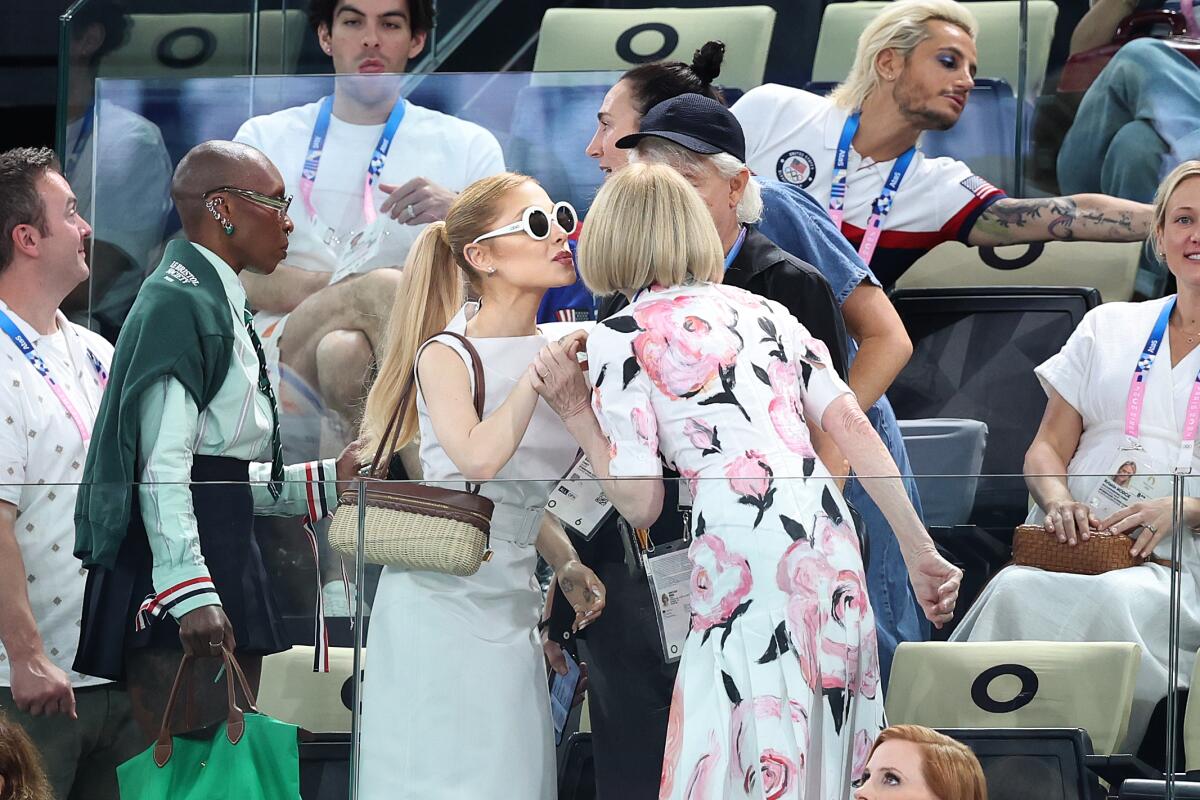
1. Actor Tom Cruise greets fans before women’s gymnastics team qualifying at the Paris Olympics on Sunday. 2. Rapper and official U.S. women’s water polo “hypeman” Flavor Flav cheers during a match against Greece on July 24. 3. Recording artist Ariana Grande, left, and Vogue editor in chief Anna Wintour greet each other while attending women’s gymnastics qualifications at the Paris Games. (Wally Skalij / Los Angeles Times)
A sellout crowd of 76,000 packed the Orange Velodrome in Marseille for the first day of men’s soccer. Ticket holders waited in line for swimming at La Defense Arena. Badminton players were startled by the turnout at Porte de la Chapelle.
“Even at 8 a.m., the stadium was fully packed,” said Satwiksairaj Rankireddy of India. “I love the feeling of playing in front of such a large crowd.”
At Bercy Arena, they clapped in unison to a thumping techno beat that played while gymnasts rotated between events. At the Grand Palais, fencing referees had to wait for cheering to subside before declaring “Allez” to start the next point.
“Nothing compares to this, no, absolutely not,” American fencer Lee Kiefer said after winning gold in the women’s foil. “This is the top.”
There have been other positives. Olympians have family and friends in the stands. They can attend other sports on their days off and mingle freely in the athletes village.
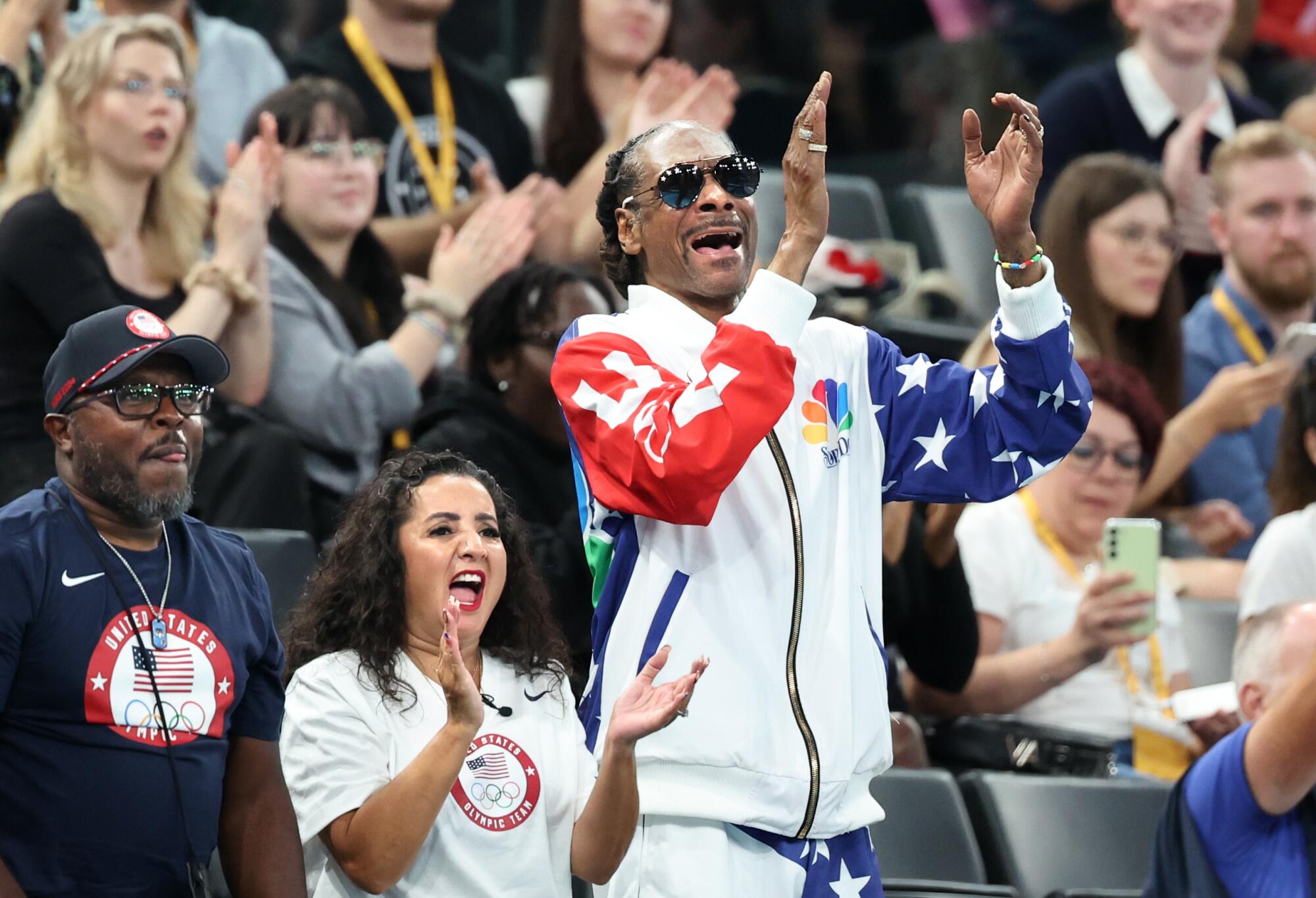
“This is the Olympic dream you imagined from childhood,” said Lena Micheel, a German field hockey player. “Meeting the other athletes and getting in touch with everything … Tokyo was a whole different kind of story.”
Most of all, there is no more testing, no threat of the novel coronavirus hovering overhead.
As of early this week, a British swimmer and five members of the Australian women’s water polo team had fallen sick with COVID, but an official said the illness was being handled “no differently to other bugs like the flu.”
No one was sent home. The athletes continued to practice and were looking forward to competing.
More to Read
Go beyond the scoreboard
Get the latest on L.A.'s teams in the daily Sports Report newsletter.
You may occasionally receive promotional content from the Los Angeles Times.

